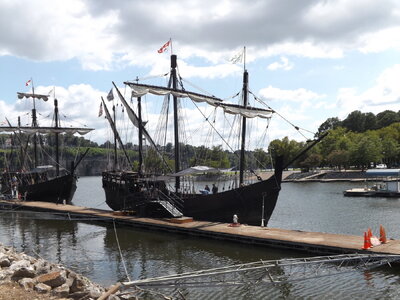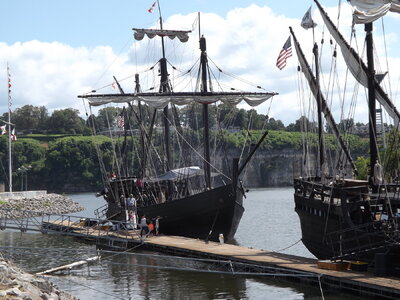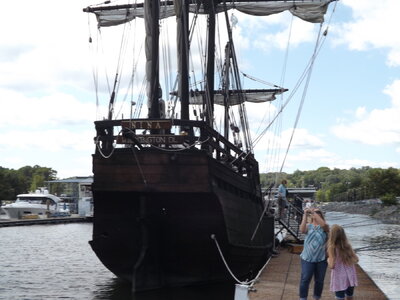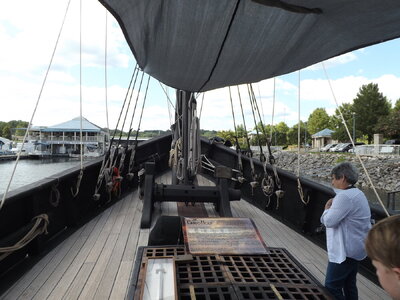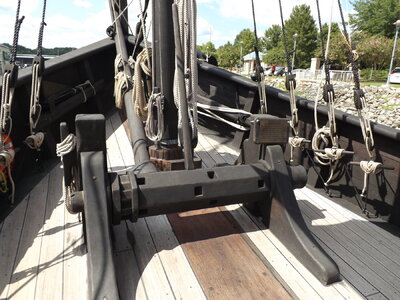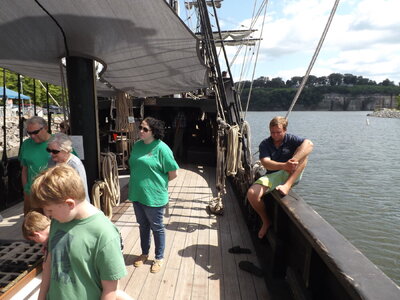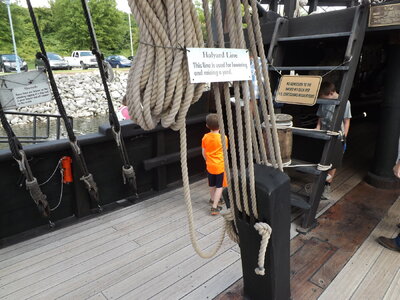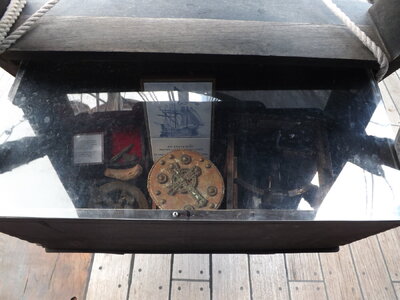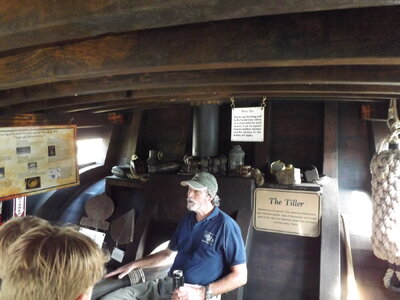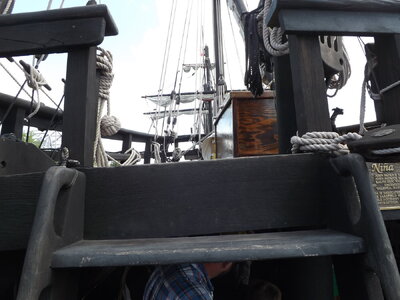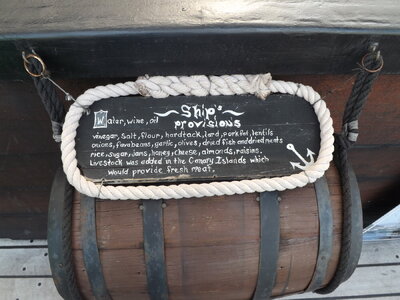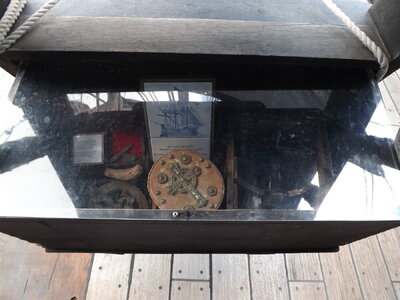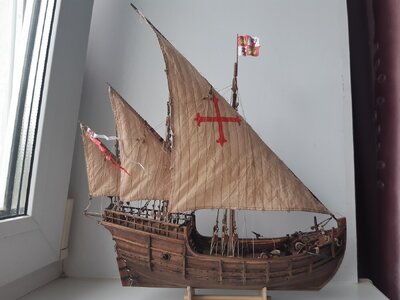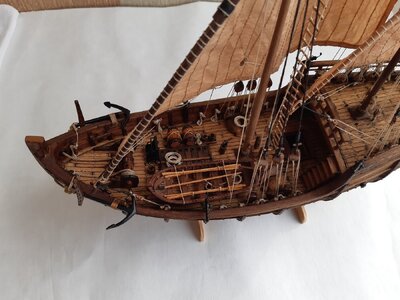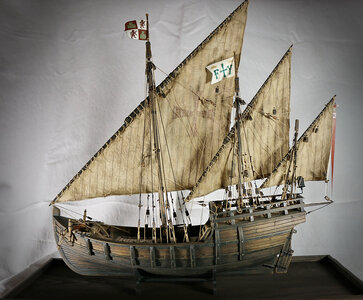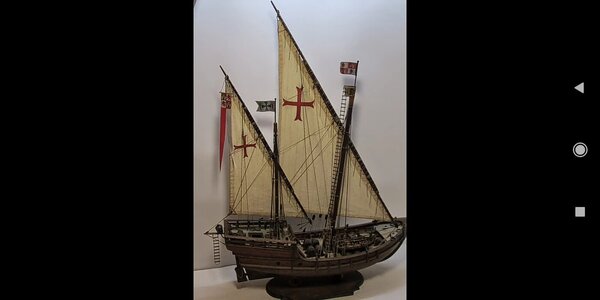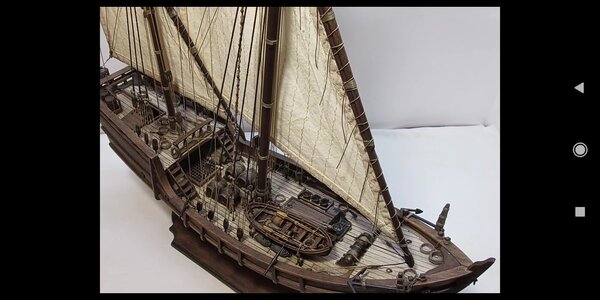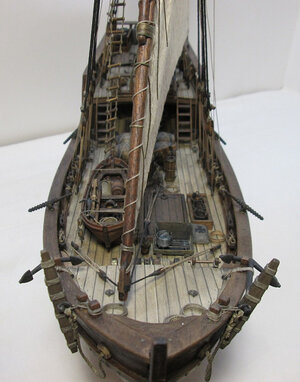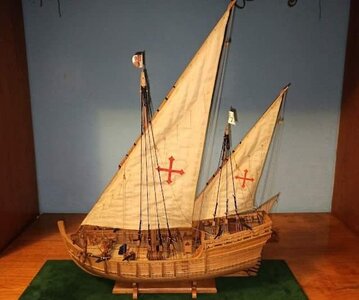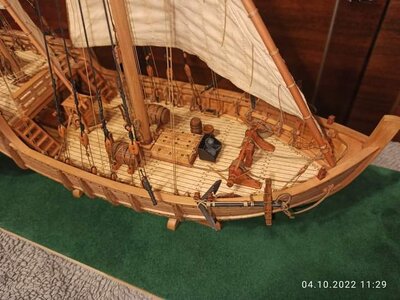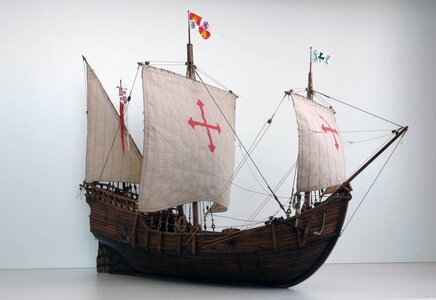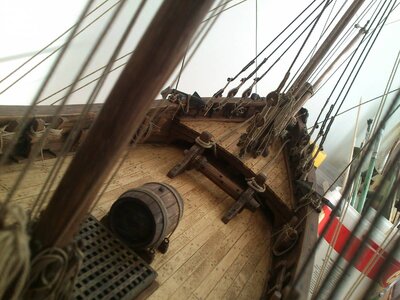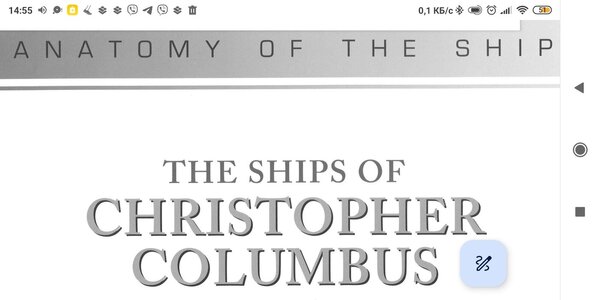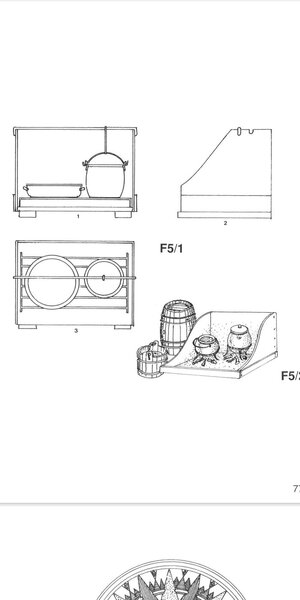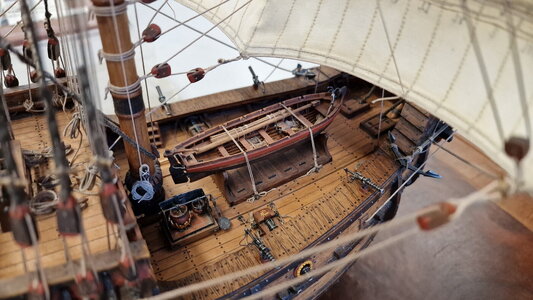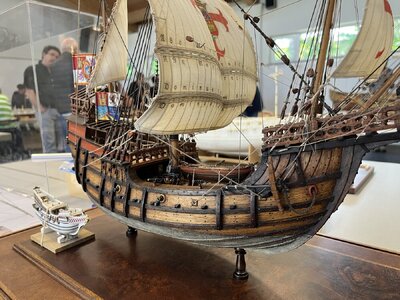Hello Han and welcome to the forum.
In 2019, replica ships of the Nina and Pinta visited my town (Florence, Alabama, USA). The following is a summary of their information packet:
They were built by the Columbus Foundation. Following years of research the group first built the Nina as it had the most information and history available as she participated in Columbus' first three voyages. The Nina was built as a Caravel Redonda, with square sails on the fore and main masts for better sailing downwind. The foundation hired John Patrick Sarsfield to design and construct the ship. The building process called Mediterranean Whole Moulding, used by master ship builders in the 15th century was used in the construction. This process was in daily use in shipyards on the coast of Bahia in Brazil. The fishing village of Valenca was selected as the build site. Only traditional tools such as axes, adzes, hand saws and chisels were used. The timber was sourced from the tropical forests of Bahia.
Ships of this period were typically not built from a set or plans but from the mental template in the head of the shipwright who based the dimensions of the ship on a set of proportions. Fundamental factors as the number of masts and rigging specifics were clarified from recent discoveries of wrecks in the Caribbean.
Tragically, John Sarsfield was killed in a traffic accident in 1990 while on a trip to select a main mast.
As the hull was complete, the ship had yet to be rigged. British Naval Historian Jonathan Nash, one of the main researchers of the project oversaw completion of construction. John produced a sail plan for the caravel together with numerous drawings of blocks, spars, and other fittings.
No historical design information has been found for Nina but specific reference to her rig and gear survives in a document called "Libro de Armadas" which was discovered by Eugene Lyon.
It indicated that Nina may have been a four-master. The document also included an inventory of equipment aboard the Nina in 1498 when new Master Pedro Frances took over the ship. Nance's sail plan represents the Nina during the eight recorded busy years of her life following her departure from the Canaries in September,
1492.
In June, 1990, a group of marine archaeological researchers from "Ships of Discovery", based in Corpus Christi, Texas spent a week inspecting the project and were convinced of its authenticity. They published their observations in an article in the January 1991 issue of Archaeology magazine. I don't know if this article is currently available.
In December 1991 the Nina left the banks of the Rio Uno in Valenca, Brazil, rigged as a four-master. It carried a crew of eleven and arrived in Puntarenas, Costa Rica on January 23, 1992 to take part in the film "1492" directed by Ridley Scott. It's voyage of over 4,000 miles represents the first time that a discovery caravel replica has made a successful unescorted open ocean passage of any considerable distance.
Other info: the cargo hold was used for provisions, water, and armaments. Live animals included horses, cows, and pigs suspended in slings for the ship's motion; and chickens. The men lived and slept on deck, which was often awash. Cooking was done in a fire box located on deck in the bow of the ship. There are no ratlines, the crew climbed the ropes when needed. One of the ship's crew provided a live demonstration for us. Also, the man in the blue shirt at the tiller is a long term crewman who was a master storyteller. I wish I had gotten his name.
More information can be found at the following:
website:
www.thenina.com
website:
www.ninapinta.org
Twitter (now X): @ColumbusShips
Instagram: @ColumbusShips
Hopefully you may be able to find drawings or illustrations there
I'll try to attach some photos of my visit. Visitors weren't allowed on the quarterdeck.
